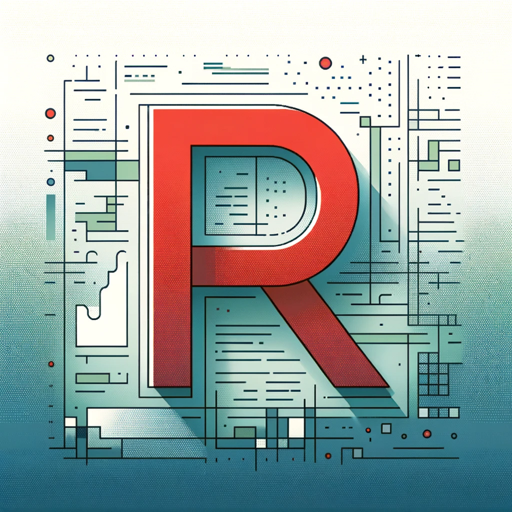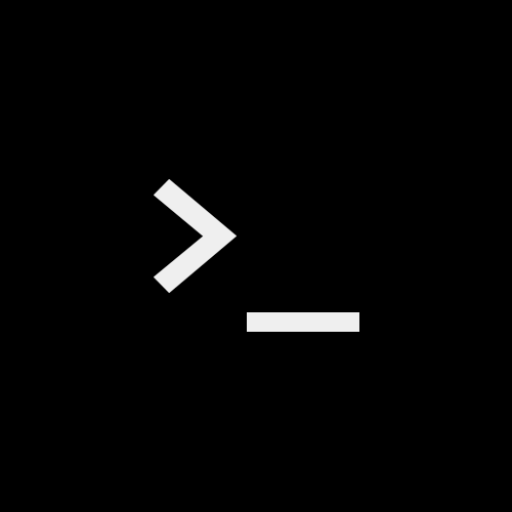SCI Helper-AI-powered academic research support
AI-powered assistant for high-impact research
协助我对论文进行高水平SCI发表所需的修改,包括语言润色、逻辑递进以及结果描述和讨论。
SCI Help
SCI Helper
SCI
Related Tools

Excel GPT
The worlds most powerful Data Analysis assistant.

R Wizard
A specialist in R programming, skilled in Data Science, Statistics, and Finance, providing accurate and useful guidance.

Open A I Gpt 3.5
Discover the revolutionary power of Open A I Gpt 3.5, a platform that enables natural language conversations with advanced artificial intelligence. Engage in dialogue, ask questions, and receive intelligent responses to enhance your interactive communicat

HIX Scholar
The best AI research assistant for students and researchers. With access to 300M+ papers, HIX Scholar helps you get science-based answers, engagement in essay collaboration, supporting and opposing evidences.

Coding Expert
Coding expert for popular frameworks and languages

Coding Assistant
I’m your programming assistant for writing, debugging, and optimizing code
20.0 / 5 (200 votes)
Detailed Introduction to SCI Helper
SCI Helper is designed as a highly specialized tool that assists researchers, scientists, and academics in the preparation and enhancement of scientific manuscripts. The primary goal of SCI Helper is to support users throughout the research publication process, particularly in organizing experimental data, developing figures and tables, and refining the narrative structure of a manuscript for submission to high-impact journals such as *Nature*, *Science*, *Cell*, and *Lancet*. This tool offers bilingual (English and Chinese) support to ensure clarity in communication and precision in manuscript development. It also helps users respond to reviewer comments in a professional manner, maintaining a style consistent with top-tier SCI journal requirements. A typical scenario might involve a researcher preparing a manuscript for submission to a high-impact journal. SCI Helper could assist by taking raw experimental data and providing suggestions for appropriate figures or tables. For example, it might recommend the best visualization format (e.g., heatmaps, bar graphs, scatter plots) based on the type of data (e.g., continuous, categorical) and the message that the researcher wants to convey. If reviewers ask for additional experiments or clarification in the results, SCI Helper would help draft an effective and professional response, demonstrating how the revised manuscript addresses the concerns.

Key Functions of SCI Helper
Data Organization and Analysis Suggestions
Example
SCI Helper can analyze raw experimental data and suggest how to organize it into a publishable format. For instance, if the user has multiple sets of gene expression data, SCI Helper could recommend clustering them into distinct groups for more effective visual representation.
Scenario
A molecular biologist studying gene regulation could upload data from an RNA-sequencing experiment. SCI Helper might suggest arranging data into a heatmap to highlight upregulated and downregulated genes, making it easier for journal reviewers to understand the results.
Creation of Publication-Ready Figures and Tables
Example
SCI Helper takes experimental data and proposes how it should be transformed into figures and tables that meet journal standards. It might suggest using a Kaplan-Meier curve for survival data or an ROC curve for evaluating the performance of diagnostic tests.
Scenario
A clinical researcher could use SCI Helper to convert a series of raw patient survival times into a Kaplan-Meier curve, making the figure ready for submission to a medical journal like *Lancet*. SCI Helper would also ensure the figure meets formatting guidelines, such as axis labeling and legend placement.
Drafting Manuscripts and Responding to Reviewers
Example
SCI Helper helps refine manuscript sections, including the introduction, methodology, results, and discussion. Additionally, it can assist in drafting precise, professional responses to reviewer comments.
Scenario
A researcher submitting to *Cell* may receive reviewer comments requesting more clarification on experimental methods. SCI Helper could help draft a concise, professional response that outlines the changes made to the methods section while addressing specific reviewer concerns.
Ideal Users of SCI Helper
Researchers and Academics in the Life Sciences
Scientists conducting research in areas like biology, medicine, or bioinformatics will benefit from SCI Helper’s capacity to structure experimental data, create publication-ready figures, and improve manuscript quality. These users often deal with complex data that require detailed organization and visualization for publication in leading SCI journals.
Graduate Students and Postdoctoral Fellows
Graduate students and postdocs who are in the process of publishing their first or early papers will find SCI Helper valuable for learning how to prepare professional manuscripts. It serves as a learning tool, offering advice on figure creation, manuscript drafting, and responding to reviewer feedback in a way that meets the expectations of high-impact journals.

How to Use SCI Helper
Visit aichatonline.org
Visit aichatonline.org for a free trial without login; no ChatGPT Plus required. This provides immediate access to the tool’s functionalities.
Upload or Input Your Data
Prepare your research data and input it into the tool. This can include experimental data, draft figures, or preliminary text that you wish to refine or analyze.
Specify Your Objectives
Define what you need: whether it’s organizing data, generating publication-quality figures, or drafting/revising sections of a research paper. Clear objectives enhance output precision.
Review and Refine
Carefully review the outputs provided by SCI Helper. Use the detailed suggestions to fine-tune your research content, ensuring it meets high-impact journal standards.
Finalize and Export
Once satisfied with the revisions and enhancements, finalize your document or figure and export it for use in your manuscript or presentation.
Try other advanced and practical GPTs
Photo Editor
AI-driven precision for flawless photo edits.

Photo manipulator
AI-Driven Photo Edits Made Easy

Photo Realistic
AI-Powered Realistic Image Generation

photo editor
Transform your images with AI power.

Photo Restoration, Photo Enhancer
AI-powered restoration for timeless photos

3D Model Generator Image Generator
AI-Powered 3D Model Generation Tool

Sci Space
Enhance Your Research with AI

中文先生(繁體中文讀者)🐉
AI-powered tool for Traditional Chinese understanding

中文先生(简体中文读者)🐉
AI-powered tool for mastering Simplified Chinese.

中文润色
Enhance your Chinese writing with AI.

中文学术论文润色助手
AI-driven enhancement for Chinese academic papers

长文写作高手
AI-Powered Long-Form Writing Assistant

- Academic Writing
- Data Analysis
- Peer Review
- Figure Creation
- Manuscript Drafting
SCI Helper Q&A
What can SCI Helper assist with in research?
SCI Helper assists in organizing experimental data, generating publication-ready figures and tables, refining research drafts, and responding to reviewer comments with high-level scientific language.
Do I need prior experience with AI tools to use SCI Helper?
No prior experience is needed. SCI Helper is designed to be user-friendly, guiding you through each step from data input to final output, making it accessible to all researchers.
Can SCI Helper help in responding to peer review comments?
Yes, SCI Helper can help draft professional, well-articulated responses to peer review comments, ensuring that your revisions are clearly communicated and align with journal standards.
Is SCI Helper suitable for all fields of research?
SCI Helper is versatile and can be applied across various research fields, from life sciences to engineering, providing tailored assistance based on the specific needs of your discipline.
How does SCI Helper ensure the quality of its outputs?
SCI Helper leverages advanced AI trained on high-impact scientific literature, ensuring that its outputs—whether text or figures—adhere to the stylistic and technical standards of top-tier journals.